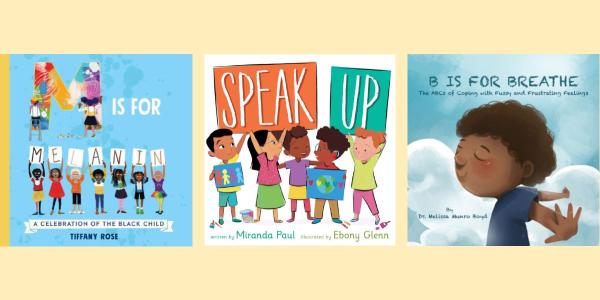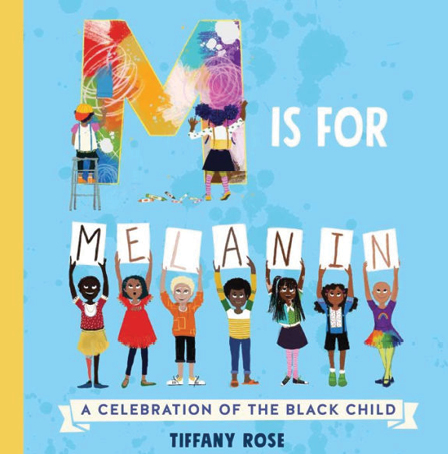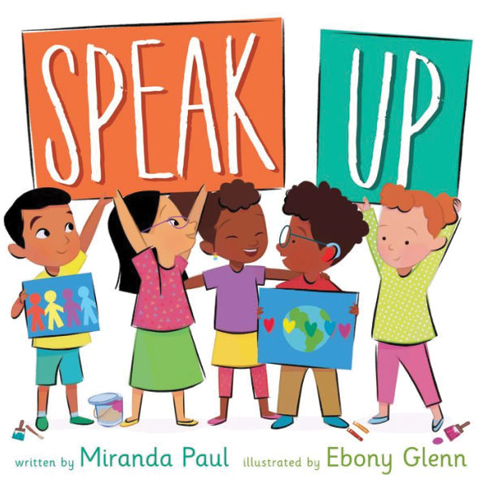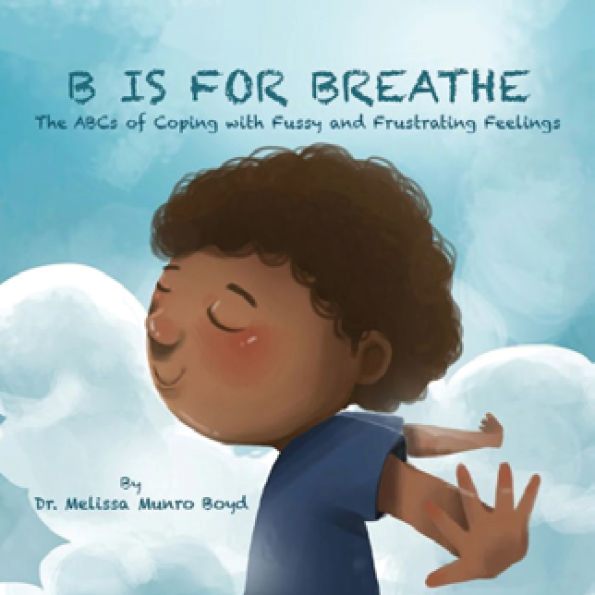Now Read This! Books that Promote Race, Identity, Agency, and Voice

You are here
Editors’ Note: This is the second of two articles that explores promoting children’s identity, agency, and voice regarding race through picture books. This article includes three exemplary books that early childhood educators can use to foster critical conversations, to address children’s developing and unknown biases, and to support their social and emotional development.
Gabby, a 5-year-old biracial girl, is excited about the cooking lesson her class will participate in after the morning class meeting. Her teacher, Mr. Glenn, can hardly keep the children focused on the calendar and the letter and word of the day because they are whispering about the “Yum Yum, Pizza Pie!” cooking lesson. With a picture of a White male chef displayed on the dry erase board, Mr. Glenn says, “Okay, all you little chefs—listed on the chart are all the things we need.” Mr. Glenn reads aloud the ingredients, cooking utensils, and the instructions for the “Yum Yum, Pizza Pie!” lesson. Mr. Glenn announces, “After break, I will assign each of you to cooking stations.”
While waiting in line to go in the restroom, Gabby tells Izzy (a White boy) and Ari (a White girl) that she wants to be in the rolling pin group to even out the dough. Izzy responds, “You can’t do that; that’s for boys!” “Yeah,” adds Felix (a Latinx boy). Marvin (a Black boy) tells Gabby they can roll the dough together because that is the group he wants to be in too. “You can’t be a chef,” Felix says, “They are White!” Izzy agrees.
Back in the classroom, Ari is feeling sad and doesn’t want to participate. Mr. Glenn is surprised that Ari does not want to join in the cooking lesson. Before assigning the children to cooking stations, Mr. Glenn pulls Ari aside to ask her what happened to her excitement. Ari tells Mr. Glenn about the conversation that took place in line for the restroom. Mr. Glenn, feeling slightly responsible for Izzy and Felix’s behavior, thanks Ari for speaking up and decides that a lesson about stereotypes needed to occur before cooking. Mr. Glenn recognizes that his representation of who can be a chef was both limited and limiting.
Establishing a caring classroom climate that promotes fairness and respect toward others who may be different from oneself requires early childhood educators to be mindful of their curricular decisions. When students of color do not see characters who look like them reflected in dynamic and positive ways, they are denied the encouragement needed to imagine what is possible. As captured in the opening vignette, the White male chef’s picture narrowed the view for Mr. Glenn’s students about who can be a chef concerning race and gender.
Children’s identities, learning, and growth are shaped by the perspectives and experiences early childhood educators provide for children in the classroom. Upon reflection, Mr. Glenn acknowledges his example contributed to his students’ narrow view of who can be a chef. Recognizing his role in this (mis)perception by his students, Mr. Glenn immediately makes another curriculum decision to challenge and correct some of his students’ views about race and gender concerning careers.
As explained in the first part of this Now Read This series, educators must have open, honest, and anti-biased discussions and activities about racial, ethnic, and cultural differences and injustice. When teachers intentionally plan for these conversations (versus responding to them reactively), children speaking up about their classmates’ (mis)treatment will become a common practice in classrooms where children’s identities are affirmed. Their voices for equity will be promoted and protected, and their agency to advance equity will be preserved. Here are three exemplary books that early childhood educators can use to foster agency and positive identity in their classrooms:
 M is for Melanin: A Celebration of the Black Child
M is for Melanin: A Celebration of the Black Child
by Tiffany Rose, is an alphabet book that not only teaches children their ABCs, but also uses each letter to represent an affirming positive message to promote, protect, and preserve cultural pride in Black children. A, for example, is for afro, a celebration of Black hair. V is for using your voice to encourage all children—Black children in particular—“to speak out for what is right and speak up when others are silent.” This book will empower young children to be bold and be fearless and, most importantly, be themselves!
Try this! Teachers can cultivate a positive, knowledgeable, and confident self-identity in young children by helping them recognize their physical features and personal beauty using positive and affirming adjectives to describe the self. Teachers can also ask children to participate in a “What Do You See?” activity. Teachers provide each child with a plastic mirror and encourage them to use positive adjectives to describe their physical characteristics (eye color, skin color, hair texture/length). They then invite children to cut out pictures from diverse magazines of people who look like them. Teachers may choose to create a class book that showcases the diverse pictures that the children collected, and use it to facilitate a discussion in which they explore the similarities and differences that we all share as humans.
 Speak Up
Speak Up
by Miranda Paul and illustrated by Ebony Glenn, encourages children to find and use their voices to speak up. Children use their voices to express gratitude for a special treat and to challenge an unfair rule. Through their everyday actions, children can make the world a better place—beginning in their respective classrooms! This book aligns with the powerful words of former United States representative and Civil Rights leader and icon John Lewis, who encouraged Americans to “Get in trouble, good trouble, necessary trouble.” By this, he meant: “When you see something that is not right, not fair, not just, you have to speak up. You have to say something; you have to do something.”
Try this! Teachers can invite children to create a “What Would You Do?” activity to cultivate fairness, equity, and social justice-minded individuals. Teachers may begin by discussing how children can stand up for themselves and stand up and speak out for another child in their class. Share various situations (a new child joins the class who doesn’t speak English; a child calls another child a name because of her skin color), write each scenario on an index card, and collect them all in a bag or box. In groups of two or three, children can pull an index card and each create a sign in response to the prompt “What Would You Do?” to stand up and speak up for the child in that situation. Provide children with poster boards, construction paper, old magazines, glue, scissors, markers, crayons, and other available recycled materials to make their signs. Paper bag puppets can also be made to act out each situation.
 B is for Breathe: The ABCs of Coping with Fussy and Frustrating Feelings
B is for Breathe: The ABCs of Coping with Fussy and Frustrating Feelings
by Dr. Melissa Munro Boyd, offers children various ways to express their feelings and develop coping skills at an early age. Many children and families need positive ways to promote, nurture, and protect their child’s positive social and emotional development as they deal with their emotions during these extraordinary times. B is for Breathe presents positive ways from letter A to letter Z to affirm feelings and help children self-regulate in responsive and responsible ways. Finally, it’s okay to let your students know in the moment that you will not always know or have the answers. Resources such as the books presented in this article can help teachers and children have meaningful conversations about matters of race(ism), identity, and culture. Educating children about the world in which they live serves to promote a healthy self-identity, agency, and voice that prepares and empowers our youngest citizens to advance equity in society.
Try this! Teachers can encourage children to design and create their own “Just Breathe” booklet that includes four relaxing activities (create a picture, play outside, listen to music, and read a book) that they enjoy doing to destress and manage their emotions and their experiences in a constructive and healthy manner. A variety of available and recycled materials can be used to design and create their “Just Breathe” booklet. During these unique times in which children and their families are having to adjust to life and living during a pandemic and civil and racial unrest, finding healthy ways to cope is vital to young children’s social and emotional development.
Together, these affirming and celebratory books help teachers shape their classrooms into spaces of equity, fairness, and justice that honor, respect, and celebrate differences. These books encourage teachers to create classrooms where, regardless of race, class, gender, ability, or disability, children feel like they belong, can become their best selves, and be unapologetically themselves. Finally, these books encourage teachers to promote, protect, and preserve every child’s right to breathe.
Copyright © 2021 National Association for the Education of Young Children. See permissions and reprints online at NAEYC.org/resources/permissions.
Brian L. Wright, PhD, is an associate professor and program coordinator of early childhood education in the Department of Instruction and Curriculum Leadership in the College of Education and coordinator of the middle school cohort of the African American Male Academy at the University of Memphis. He is the author of the award‑winning, best‑selling book, The Brilliance of Black Boys: Cultivating School Success in the Early Grades with contributions by Shelly L. Counsell, which won the National Association for Multicultural Education’s 2018 Phillip C. Chinn Book Award. He is also the author of a two‑part series of articles for Teaching Young Children that discusses ways teachers can make their classrooms more welcoming and supportive learning spaces for Black boys (NAEYC.org/black‑boys‑matter).